Download Betelgeuse (α Orionis) Worksheets
Click the button below to get instant access to these premium worksheets for use in the classroom or at a home.
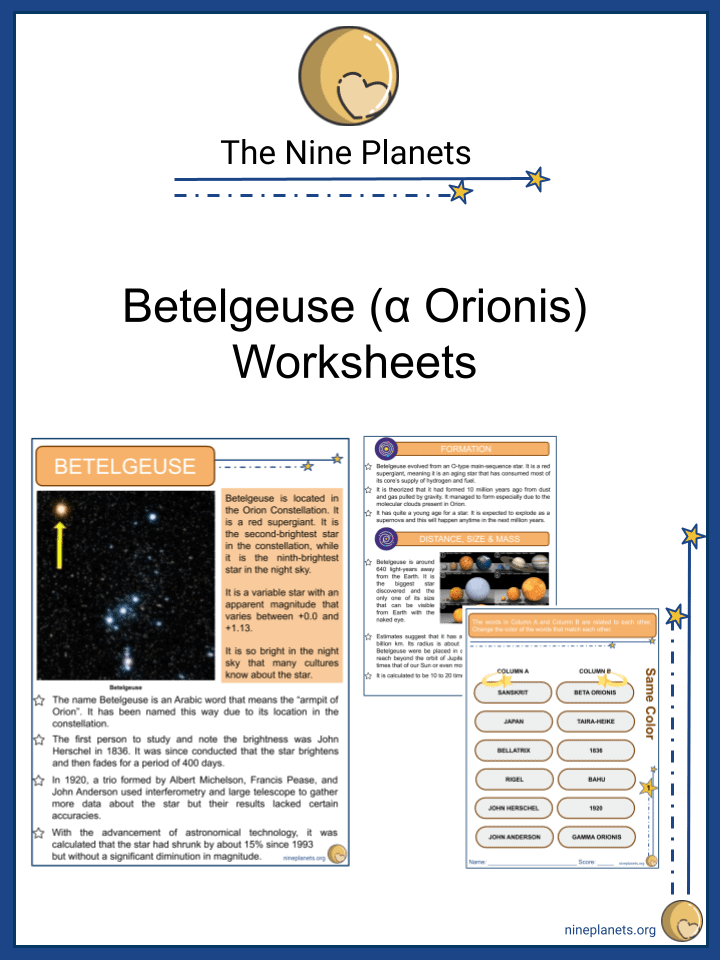
This worksheet can be edited by Premium members using the free Google Slides online software. Click the Edit button above to get started.
Download free sample
Not ready to purchase a subscription yet? Click here to download a FREE sample of this worksheet pack.
Resource Examples
Click any of the example images below to view a larger version.
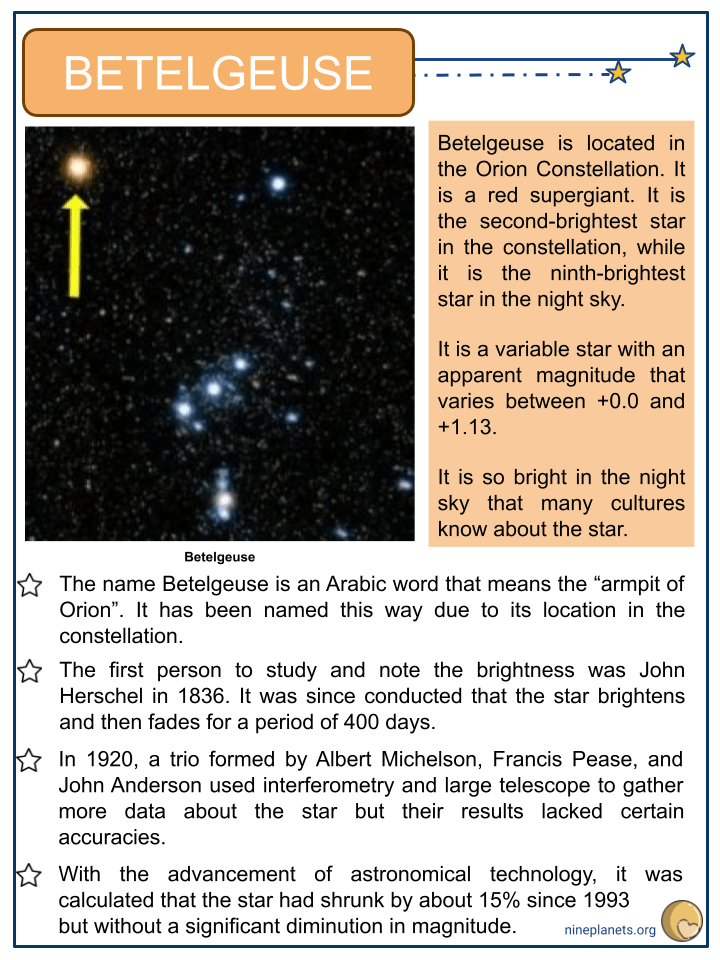
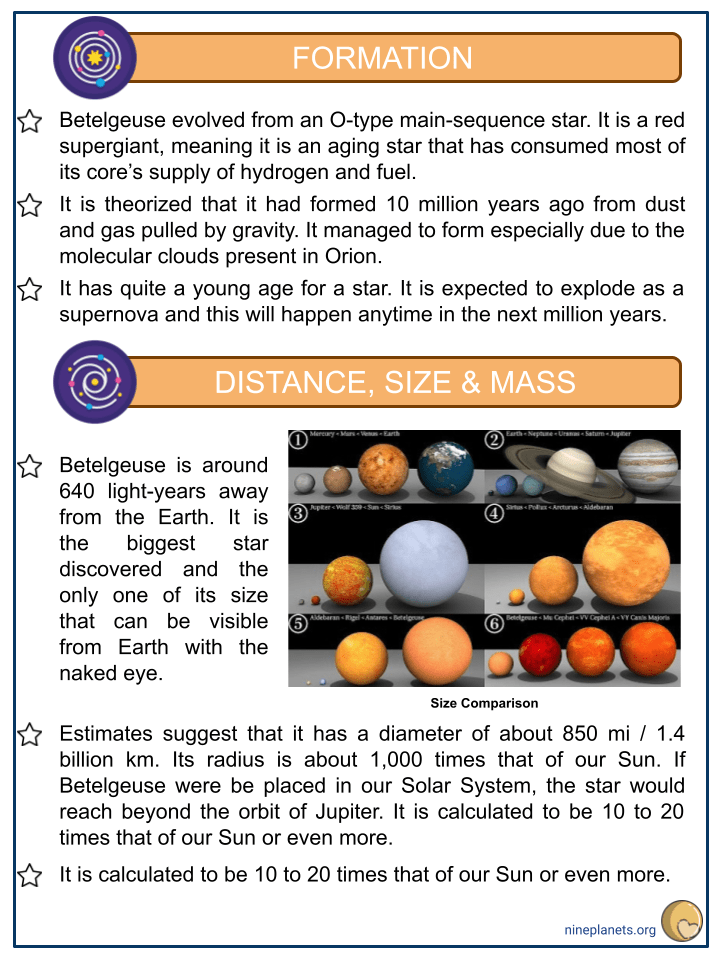
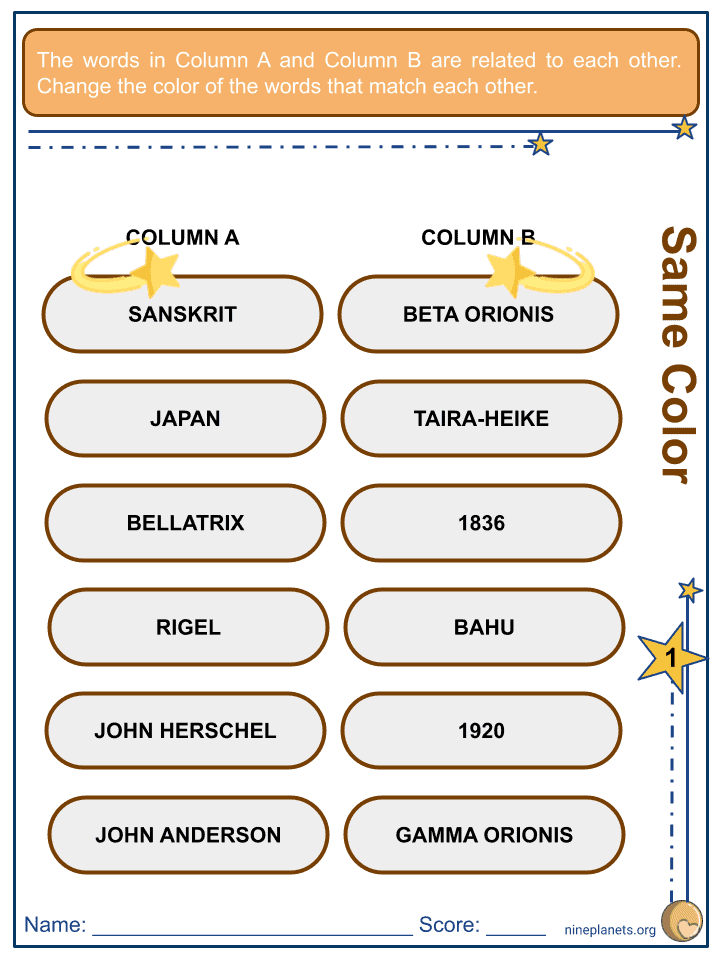
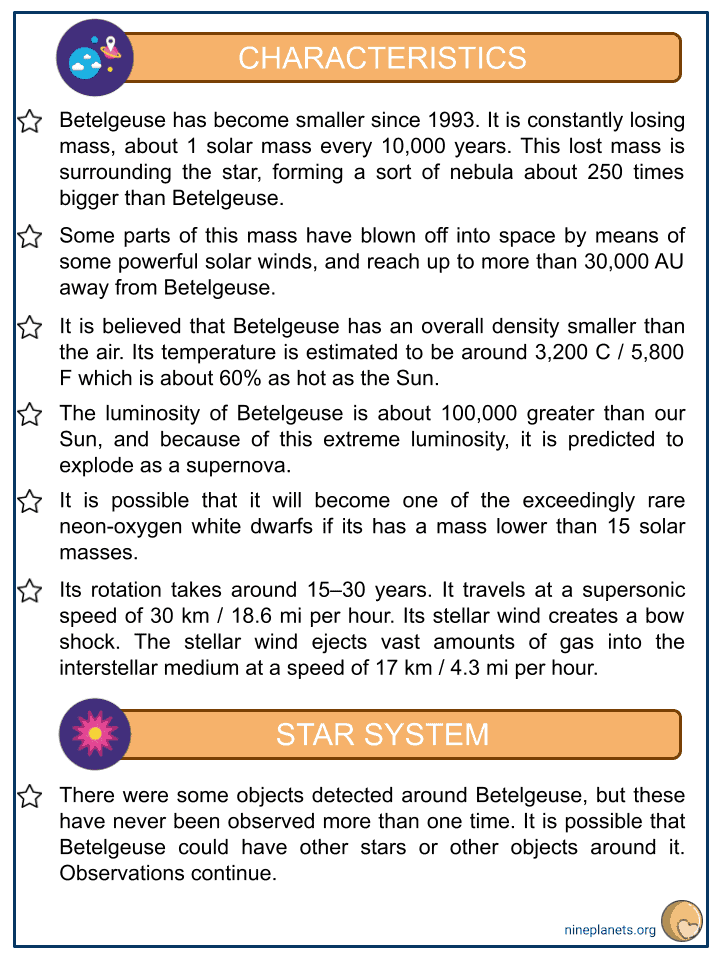
Key Facts & Information
- Betelgeuse is located in the Orion Constellation. It is a red supergiant. It is the second-brightest star in the constellation, while it is the ninth-brightest star in the night sky.
- It is a variable star with an apparent magnitude that varies between +0.0 and +1.13.
- It is so bright in the night sky that many cultures know about the star.
- The name Betelgeuse is an Arabic word that means the “armpit of Orion”. It has been named this way due to its location in the constellation.
- The first person to study and note the brightness was John Herschel in 1836. It was since conducted that the star brightens and then fades for a period of 400 days.
- In 1920, a trio formed by Albert Michelson, Francis Pease, and John Anderson used interferometry and large telescope to gather more data about the star but their results lacked certain accuracies.
- With the advancement of astronomical technology, it was calculated that the star had shrunk by about 15% since 1993 but without a significant diminution in magnitude.
Formation
- Betelgeuse evolved from an O-type main-sequence star. It is a red supergiant, meaning it is an aging star that has consumed most of its core’s supply of hydrogen and fuel.
- It is theorized that it had formed 10 million years ago from dust and gas pulled by gravity. It managed to form especially due to the molecular clouds present in Orion.
- It has quite a young age for a star. It is expected to explode as a supernova and this will happen anytime in the next million years.
Distance, Size & Mass
- Betelgeuse is around 640 light-years away from the Earth. It is the biggest star discovered and the only one of its size that can be visible from Earth with the naked eye.
- Estimates suggest that it has a diameter of about 850 mi / 1.4 billion km. Its radius is about 1,000 times that of our Sun. If Betelgeuse were be placed in our Solar System, the star would reach beyond the orbit of Jupiter. It is calculated to be 10 to 20 times that of our Sun or even more.
- It is calculated to be 10 to 20 times that of our Sun or even more.
Characteristics
- Betelgeuse has become smaller since 1993. It is constantly losing mass, about 1 solar mass every 10,000 years. This lost mass is surrounding the star, forming a sort of nebula about 250 times bigger than Betelgeuse.
- Some parts of this mass have blown off into space by means of some powerful solar winds, and reach up to more than 30,000 AU away from Betelgeuse.
- It is believed that Betelgeuse has an overall density smaller than the air. Its temperature is estimated to be around 3,200 C / 5,800 F which is about 60% as hot as the Sun.
- The luminosity of Betelgeuse is about 100,000 greater than our Sun, and because of this extreme luminosity, it is predicted to explode as a supernova.
- It is possible that it will become one of the exceedingly rare neon-oxygen white dwarfs if its has a mass lower than 15 solar masses.
- Its rotation takes around 15–30 years. It travels at a supersonic speed of 30 km / 18.6 mi per hour. Its stellar wind creates a bow shock. The stellar wind ejects vast amounts of gas into the interstellar medium at a speed of 17 km / 4.3 mi per hour.
Star System
- There were some objects detected around Betelgeuse, but these have never been observed more than one time. It is possible that Betelgeuse could have other stars or other objects around it. Observations continue.
Location
- Betelgeuse is located in the Orion Constellation and is the second-brightest star. It marks one of the “shoulders” of Orion, while the other shoulder is marked by Bellatrix, Gamma Orionis.
- Because it is so bright, it is a variable star that sometimes outshines the brightest star in the constellation, Rigel, Beta Orionis.
The Future
- Betelgeuse will explode as a supernova in the far future. If this happens, large bursts of gamma radiation will spread across, and the star will be as bright as the Moon in the night sky for several weeks. It may even be visible during the day.
- It will either be a black hole or a neutron star if its mass is about 15 times that of our Sun. If its mass is lower than 15 times, it may become one of the rare neon-oxygen white dwarfs.
How Did You Know?
- In Sanskrit, Betelgeuse was known as Bahu, which means running antelope or stag referring to the constellation as a whole.
- The ancient samurai clans Taira-Heike from Japan adopted Betelgeuse and its red color as a symbol.
- In the lore of the Tahitian people, Betelgeuse is one of the pillars propping up the sky known as Anâ-varu, the pillar to sit by.
- Aboriginal people of Australia may have known that Betelgeuse was a variable star as evident in their mythological stories.
- It is visible throughout the globe with the exception of Antarctica by mid-September to mid-March and it can be best viewed in mid-December.